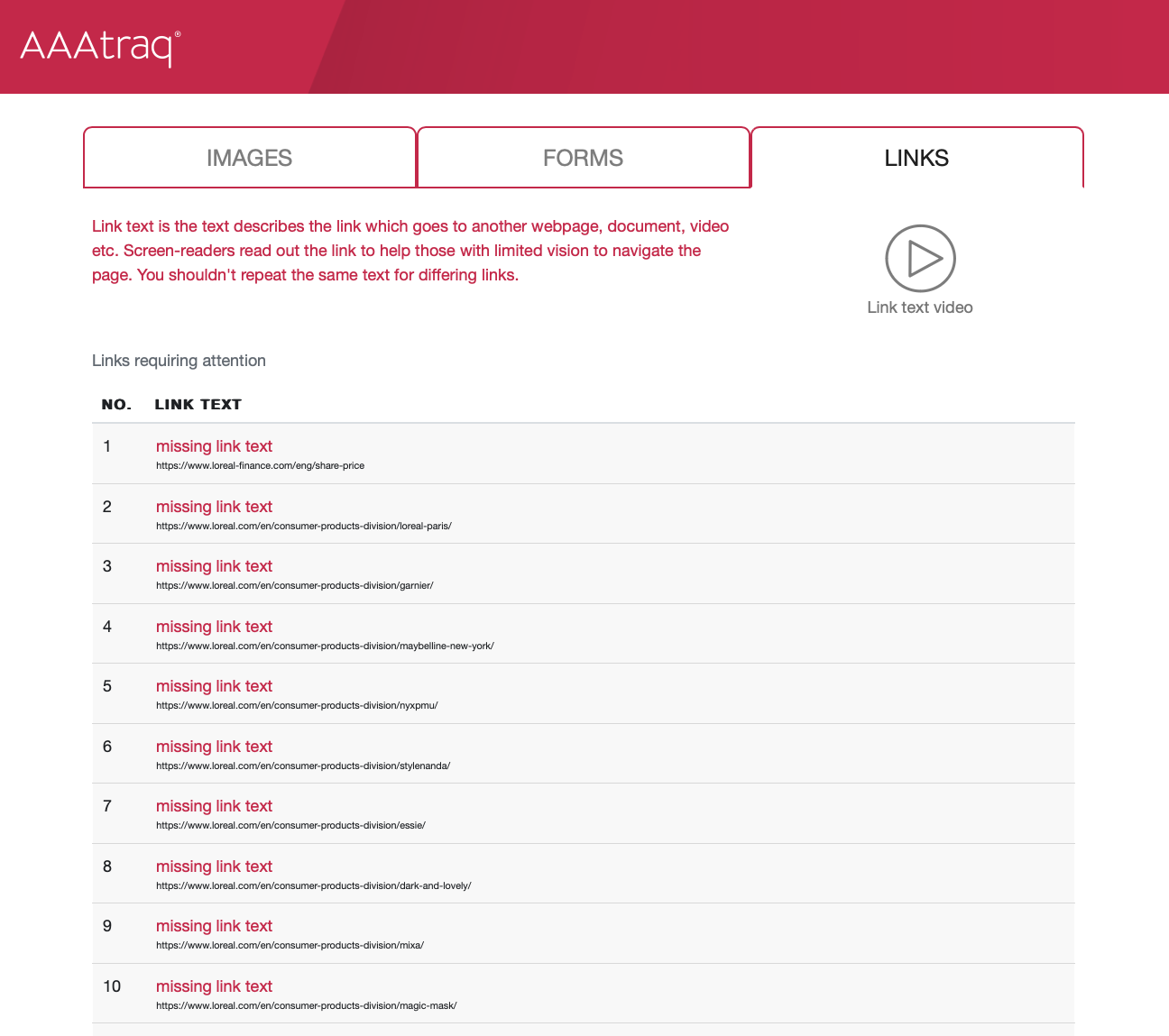Responsibility for compliance (ADA) vs marketed claims.
Jul 11 2024
L'Oréal, a global beauty giant, has faced several lawsuits in the past regarding issues with accessibility compliance. L'Oréal has been sued for allegedly failing to make its websites accessible to visually impaired users and therefore failing to meet the standards set by the ADA.....
The Misconception of ADA Website Compliance
Managing web content to ensure ADA website compliance is not a new concept, yet it remains a critical and evolving challenge for many organizations. Ignoring the guidelines can lead to significant consequences, including an increase in legal cases against companies failing to abide by WCAG standards.
According to UsableNet, specialists in digital accessibility solutions, last year alone saw a total of over 4,600 companies facing accessibility-related lawsuits. With ADA federal guidelines in effect, all organizations need to implement them on every website. The guidelines prohibit discrimination on the basis of disability.
The Risks for Companies
You might think your business is in the clear because no one is scrutinizing smaller company websites. Think again! As highlighted in the ADA Site Compliance Accessibility Blog, every business is at risk: “The smaller companies, generating annual revenue of less than $25 million, face 73% of accessibility lawsuits.” And this trend is only expected to rise.
Ensuring your website is ADA-compliant isn’t just about avoiding lawsuits; it’s about creating an inclusive and accessible online experience for all users. Noncompliance risks ruining your brand’s reputation and losing business. We often hear companies say, "We know all this and totally agree. As a company, we take ADA compliance seriously and are dedicated to reaching WCAG standards. We’ve spent money on website developers who tell us they’re experts, and the developers assure us we have nothing to worry about – our website is compliant."
The Challenges of Verifying Compliance
In the realm of web accessibility, key decision-makers, such as CFOs, stakeholders, and risk management employees, may not realize there’s a problem with their website’s accessibility because they’ve trusted someone who claims to be an expert. It is often difficult for those without technical knowledge to verify all is up to standard due to a lack of clear benchmarking and reporting. Consequently, employers often receive reassuring but inaccurate assessments of accessibility compliance on their sites.
Why Aren't Things Improving?
According to WebAIM (Web Accessibility In Mind) surveys conducted over the past five years, the majority of websites remain inaccessible to users with disabilities. This persistent issue highlights a significant gap between investment and actual improvement. We know that money is being spent in this area.
Companies look to vendors and developers to ensure website content is following guidelines and invest in a range of external tools on the market to aid in this. So why are so many organizations still falling below compliance expectations and standards? Perhaps decision-makers are being told what they want to hear by vendors and developers, leading to a disconnect between perceived and actual compliance.
Learn from L’Oréal
L'Oréal, a global beauty giant, has faced several lawsuits in the past regarding issues with accessibility compliance. L'Oréal has been sued for allegedly failing to make its websites accessible to visually impaired users and therefore failing to meet the standards set by the ADA. Since then, L'Oréal has undergone a digital transformation with the help of Sitecore and claims to be committed to inclusivity and accessibility as part of its broader corporate social responsibility initiatives.
Anne Guichard, Global Head of Digital Programs shares L’Oréal’s vision of becoming the No.1 digital beauty brand in the world. With the support of their CMS vendor, promoted as "L’Oréal has been working on refreshing and relaunching 600 websites for 35 brands and has incorporated innovative digital interactive experiences" as part of their marketing campaign.
While L’Oréal has clearly spent a lot of money on this revamp, incredibly, a simple check on an independent checker such as ours (https://aaatraq.com/check/) (opens in a new window) shows L’Oréal’s home page lacks some basic of compliance needs... as several images are missing proper descriptive captions known as alt text, making them incompatible with screen reader software; the exact claim made by plaintiffs in the past. You can see the results on the left.
Independent checking
We found, when using our independent checker, that L’Oréal is not the only big name whose homepage fails the accessibility check. Their brands Maybelline and Garnier are also among those that failed to provide sufficient alt text.
The key takeaway here is no matter how big a player you are, and how confident you are in your vendor or web developer, it’s essential to check your sites for accessibility compliance. Taking Responsibility
Ultimately, as a website owner, you are responsible for your website's compliance, not your developer. It's essential to implement a comprehensive approach that combines both automated tools and regular manual audits conducted by qualified accessibility experts. Additionally, training your team on accessibility principles and keeping abreast of evolving standards are key to maintaining long-term compliance. By following these measures, you can better ensure that your website not only meets ADA standards but also provides accessibility and usability for all users.
For an independent assessment of your website’s accessibility, use the AAAtraq ADA Risk checker. You can perform a free check at https://aaatraq.com/check to understand and mitigate any risks. Regardless of the latest compliance legislation, promoting inclusivity and ensuring your website content is accessible to everyone should always be a priority.
So, be sure you always receive accurate information and not just what you want to hear.
Further Reading and Resources
https://www.sitecore.com/landing/brand/loreal (opens in a new window)
https://www.accessibility.com/digital-lawsuits/eugene-loreal-2019-06-18 (opens in a new window)
https://codemantra.com/loreal-settles-lawsuit-over-website-accessibility/ (opens in a new window)
https://aaatraq.com/check/ (opens in a new window)
https://www.accessibility.works/blog/ada-web-compliance-managing-control/ (opens in a new window)
Subscribe to AAAtraq and enjoy complete cover and peace of mind


